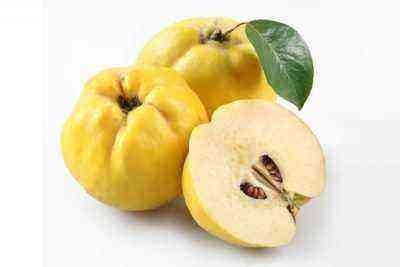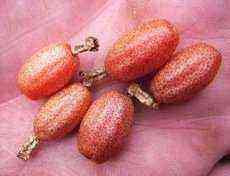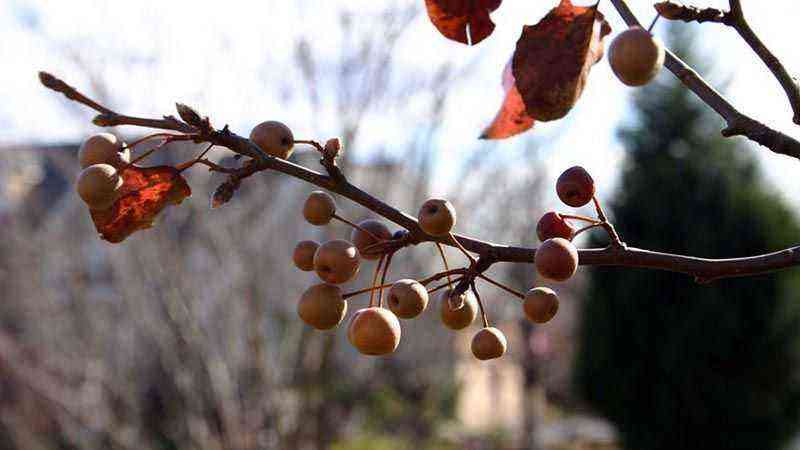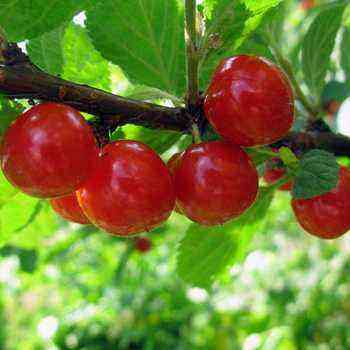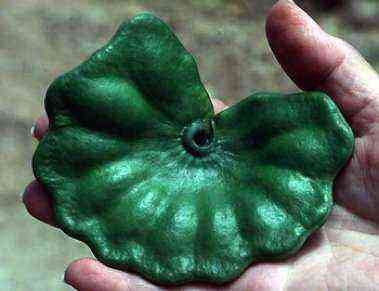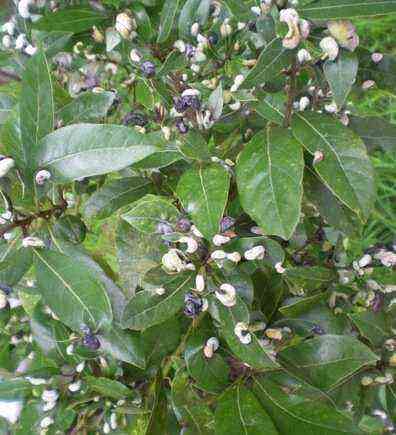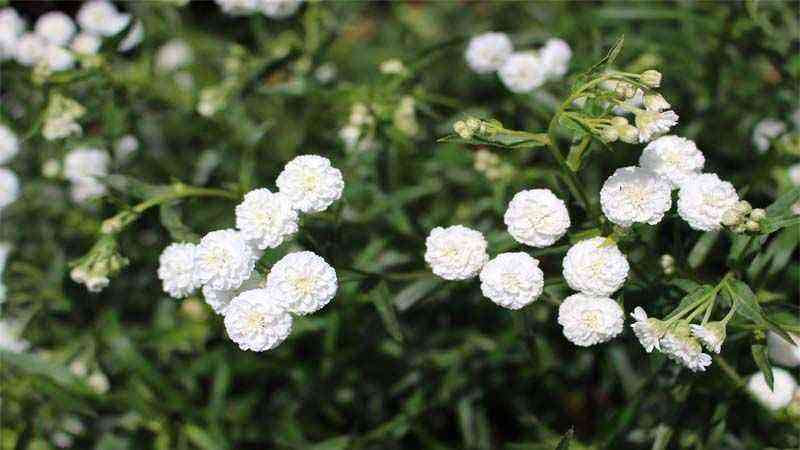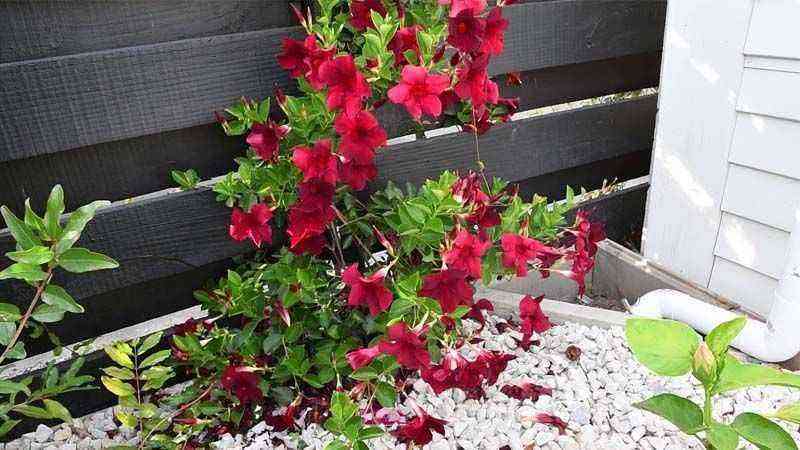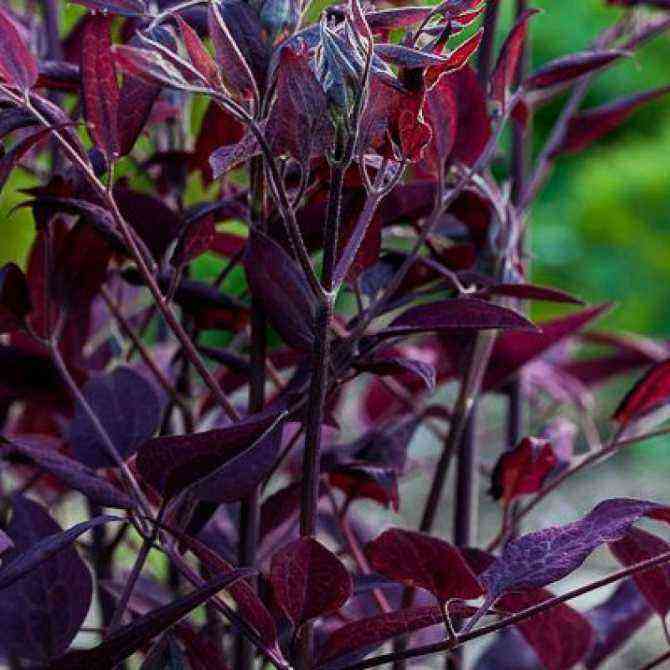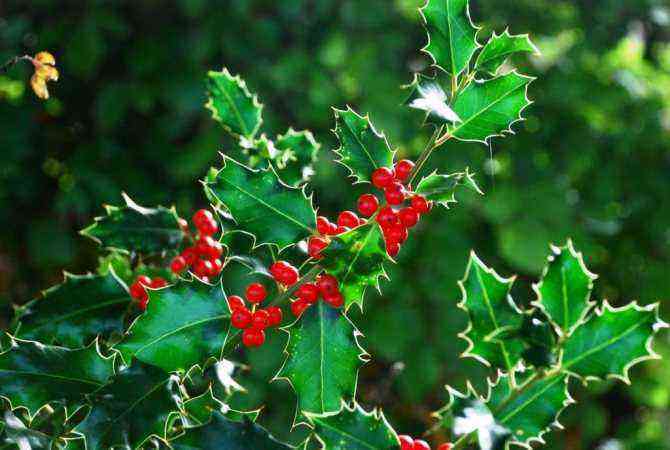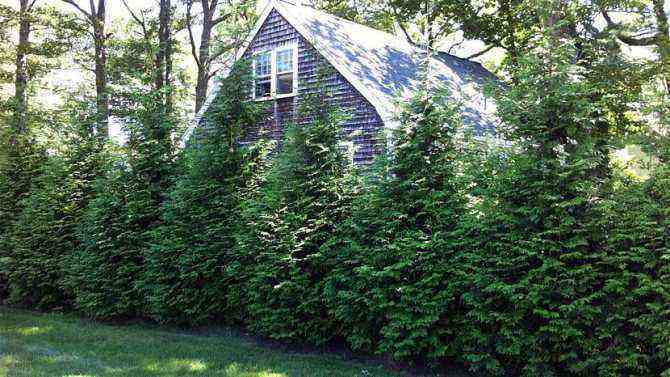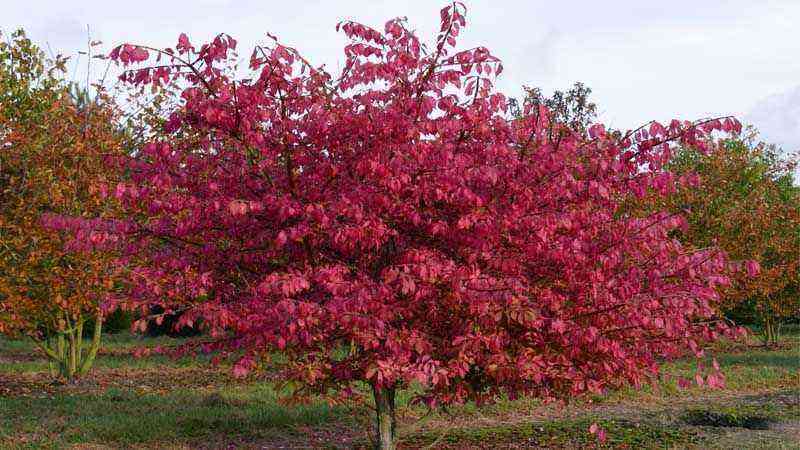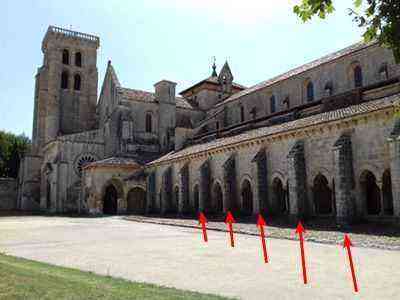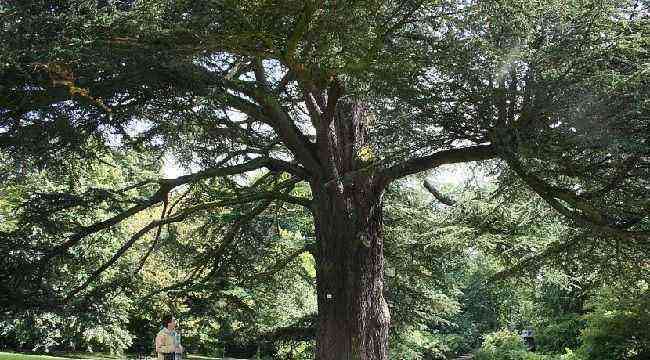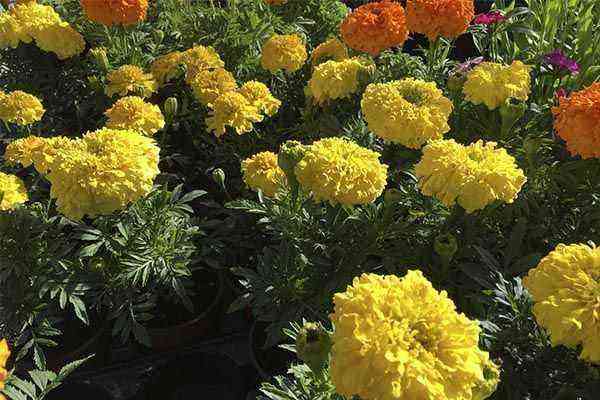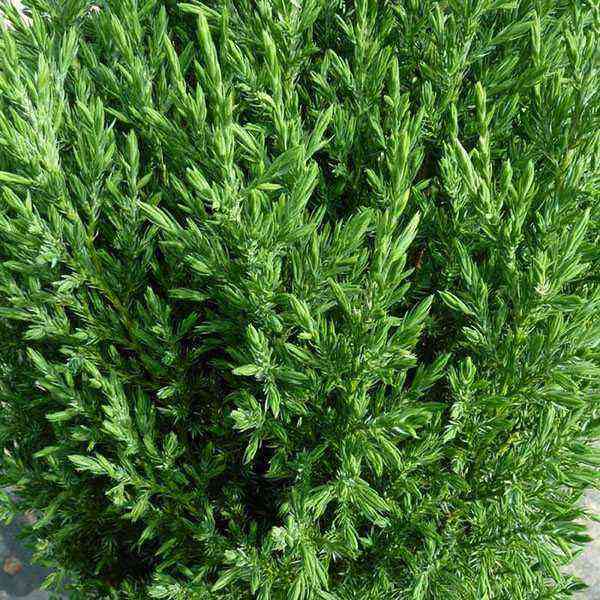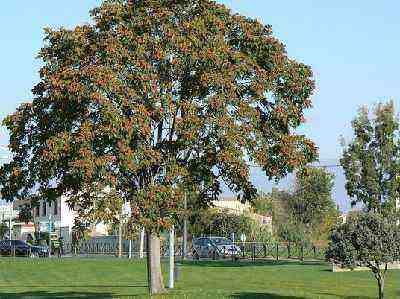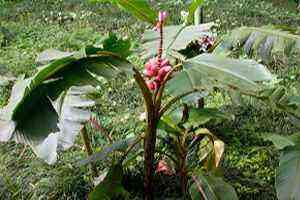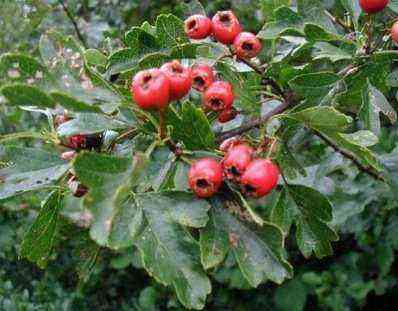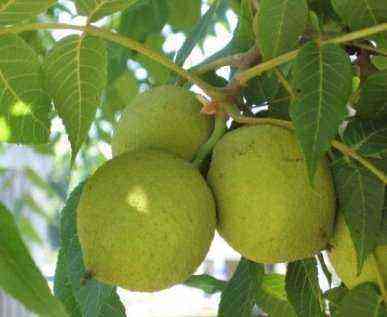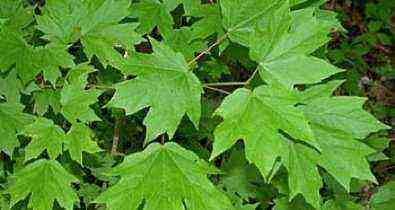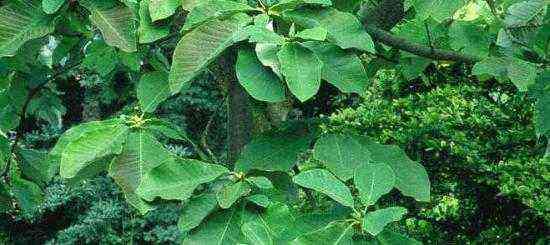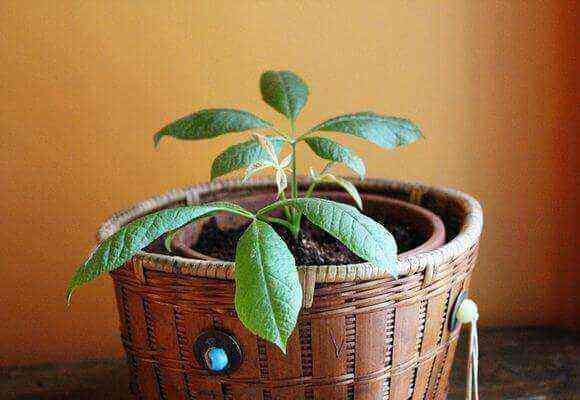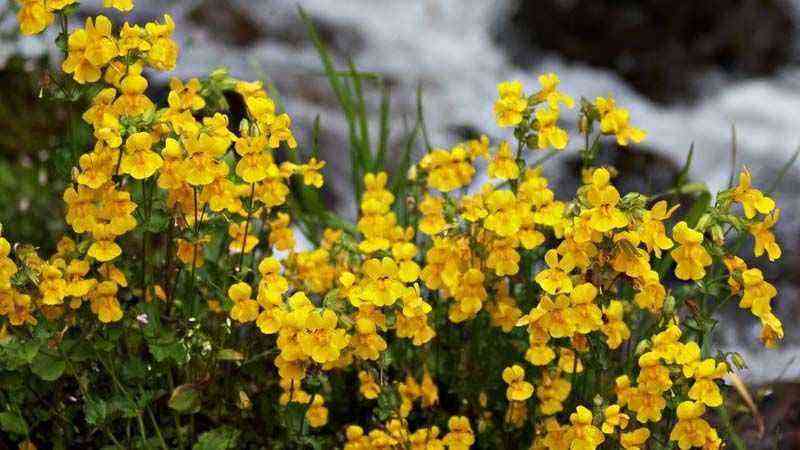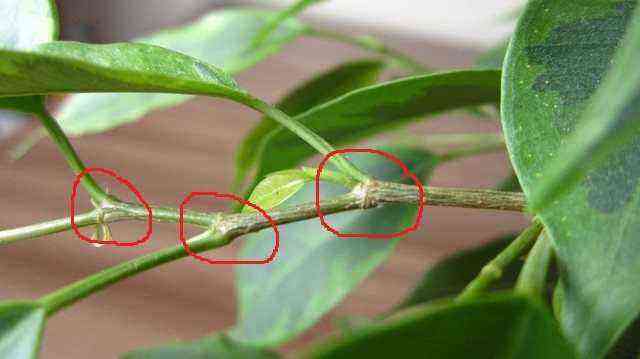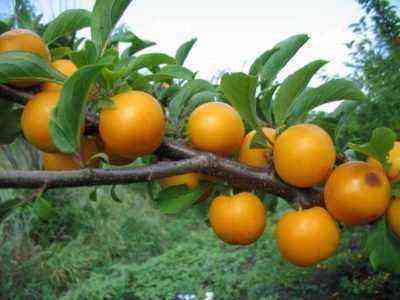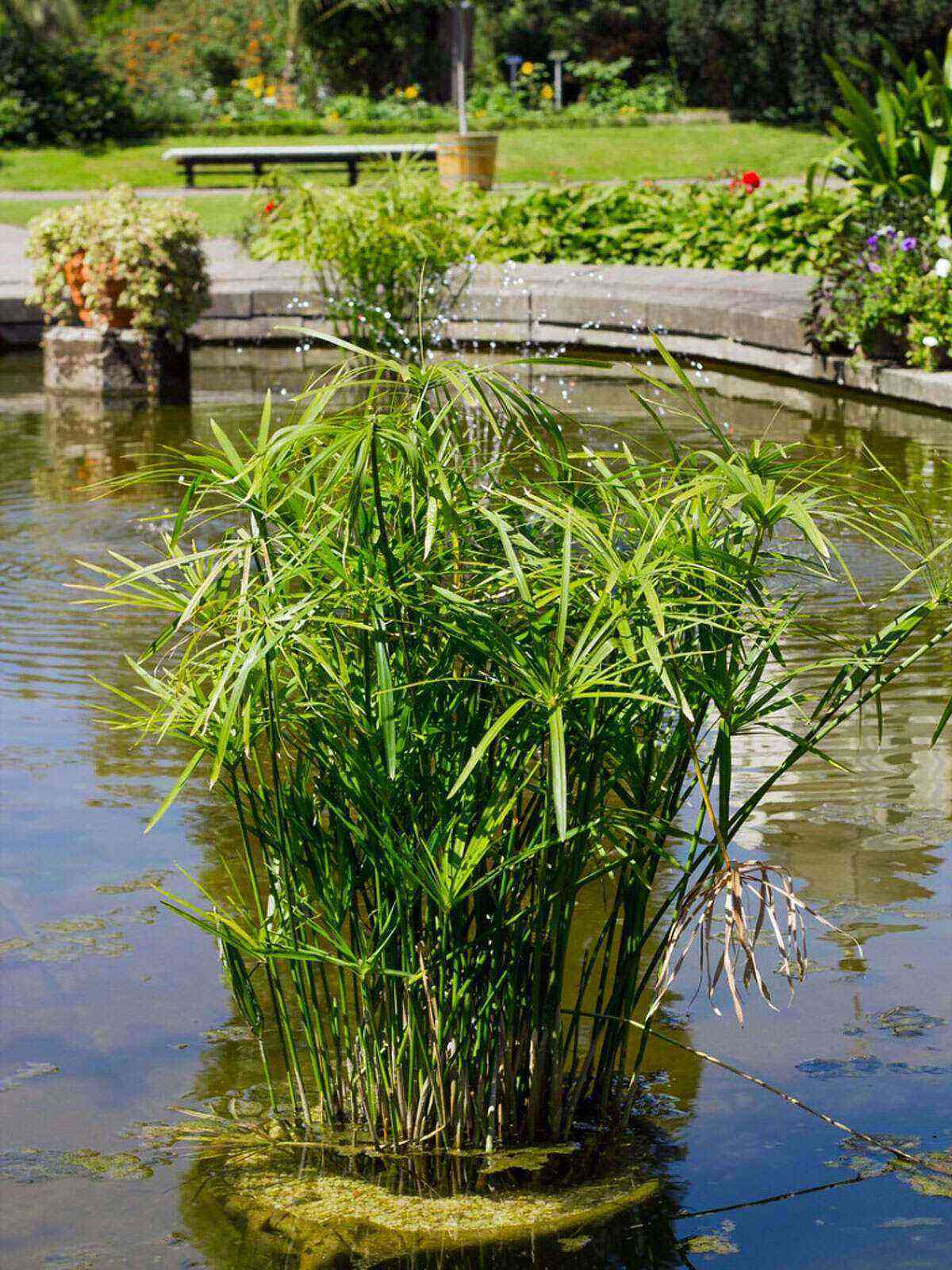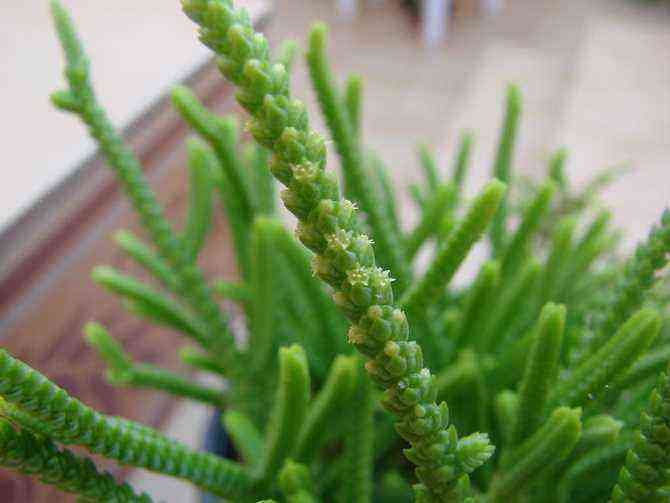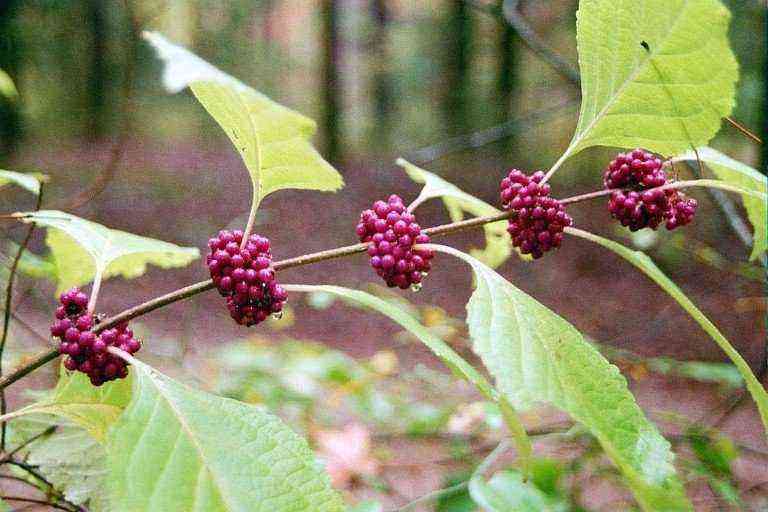Breeding methods for quince
There are several ways to propagate quince yourself. The choice of method is influenced by the time of the procedure, climatic conditions and the type of plant. Also important is the care for the plants after planting, on which the future harvest and the health of the cultivated trees will depend.
Seeds for propagation of quince should be taken only from a ripe fruit
Pinching
To propagate quince in this way, you will need a plant (podchep) and a sprout obtained from seeds. The budding procedure is carried out in the spring or summer. Chips are grown in summer from the strongest and most winter-hardy quince seeds. Often hawthorn is used as a stock. Provencal and Angerskaya quince are the best varieties for this breeding method.
Budding is carried out in the second year after sowing the seed. By this age, the sprout will get stronger, release several shoots and many leaves.
Reproduction in this way is carried out in the second half of August. In the second year after the procedure, the seedlings are dug up and planted in their permanent habitat in the garden.
More often quince is used as a rootstock for other fruit plantations. Therefore, it is not always advisable to propagate it by grafting. Better to use other more efficient ways to get a new tree.
Using seeds and foliage
There is an opinion that all fruits should be eaten whole, along with the peel and seeds. But this is not the case for most of the exotic fruits that hit the shelves. Japanese quince, in this case, was no exception.
The seeds of the fruit are used for making decoctions, but they should never be crushed, chewed or eaten. The seeds contain a substance called amygdalin, a source of the deadly cyanide poison. Also, it is worth giving up fruit with a damaged core.
Read also How to grow a rose in a potato
Decoctions are prepared from whole seeds, which are effective for the treatment of inflammatory lung diseases, skin rashes and hemorrhoids.
Infusions and decoctions from the leaves reduce blood sugar levels, normalize blood pressure. Leaves collected in the first months of summer are recommended for their preparation. By autumn, greens begin to store toxins obtained from the environment during the active growing season. The foliage is carefully plucked from the bush and dried in the sun. The required amount of leaves is poured with hot water, boiled over low heat, filtered and used as directed.
Seed cultivation
Seed propagation is the most popular and effective method used by gardeners. This is how decorative and garden quince multiplies. For sowing with seeds, you will need to take a well-ripened quince fruit of a bright yellow color without signs of rot, mold and mechanical damage. Quince seeds have good germination rate – 95%, so growing new specimens in this way is almost always successful.
Quince seeds are extracted and stratified. First, they are soaked for 5 hours, then mixed with coarse river sand in a ratio of 1: 3. Moistened with a spray bottle and placed in a refrigerator (in the vegetable compartment) for 3 months. During this time, the seeds should be regularly irrigated with a spray bottle and ventilated. Seeds with mold must be discarded.
If seed sowing is planned in spring, then the seed stratification process takes place in December or February. December seeds are planted in peat pots, February seeds – immediately in open ground at the end of April.
After the expiration of the stratification period, the seeds are planted in a nutrient substrate of sod, leafy soil and sand (ratio 2: 2: 1) to a depth of 2-3 cm. You can use peat pots for planting. With the onset of warm days, the seedlings are accustomed to fresh air, periodically taken out into the street 2-3 weeks before the planned planting in the garden. They dig up the soil on the site, moisten well. Plants, together with peat pots, are planted at a distance of 15 cm from each other. Then the plantings are mulched with peat or rotted manure.
Planting seeds in open ground is carried out in the fall. The distance between the seeds is 15 cm, the row spacing is 20 cm. With the onset of spring, the procedure for thinning the seedlings is carried out. First, the distance between the planted seeds should be 15 cm, then 25 cm. Further care of the plants is the same as for adult trees – regular watering, loosening the soil, weeding, pruning and feeding.
Japanese quince from seeds at home
Plant seeds must undergo stratification: they are placed in a humid environment at a low temperature. After the emergence of seedlings, they are transplanted into the substrate. At home, sand is used for stratification in combination with peat chips (ratio 1,5 to 1). You can also use just sand.
A layer of sand is poured into the bottom of an ordinary pot. Then the seeds are laid out, evenly distributed over this layer. From above they are again covered with sand. The contents of the pot are well watered and placed in a plastic bag. Store the container in a cool place. A cellar or refrigerator will do, the main thing is to monitor the temperature.
It should vary between 0 and +5 degrees.
In this state, the seeds are kept until seedlings appear (about 3 months). At the same time, they are checked every two weeks and the moisture of the sand is monitored.
Of course, a plant made from cuttings will bear fruit faster. Quince from seeds will not begin to bear fruit immediately, you will have to wait until a shrub is formed. However, in taste, it will be in no way inferior to its cuttings counterparts.
Try growing your own quince, which is a great alternative to lemons. You can cook delicious compotes, jams from it and enjoy yourself all year round.
Cuttings
Reproduction of quince by cuttings is the only way that makes it possible to get a new plant with varietal characteristics of the mother tree.
For this growing method, you need annual green shoots.
Cuttings are cut in June in warm sunny weather. Each shoot should have 1-2 internodes and a heel about 1 cm long. Shoots are cut at an angle of 45 °. The place of the cut is dipped for 1 hour in a root formation stimulator (“Heteroauxin”, “Epin” or “Kornevin”). Then the shoot is dipped into a wet substrate of peat and sand (3: 1) at the cut point. The cutting is planted at an angle. With a stable temperature regime in the range of 23-25 ° C, the cuttings take root in 1-1,5 months. The percentage of rooting by cuttings is up to 50%.
After that, young plants are planted on the site for a permanent habitat.
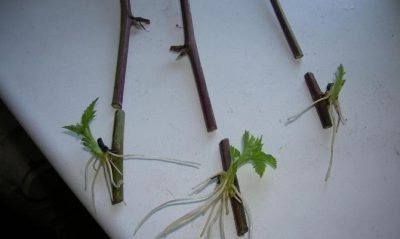
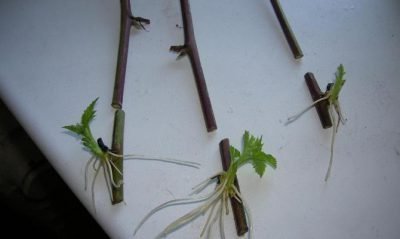
In half of the cases, quince cuttings take root.
Odrevesnevshimi cuttings
You can propagate this plant with one- or two-year-old cuttings. The strongest and healthiest cuttings with lignified bark are chosen from the lower branches on the tree. Cut 20-25 cm long so that the bottom cut is next to the kidney. Cuttings are planted at an angle in the same nutrient mixture as lignified shoots.
Approximately 2-3 weeks before rooting, the lowest bud is sprinkled with nutritious soil by 1-2 cm. Then the substrate is leveled and mulched with peat.
Root offspring
This method does not always make it possible to get a good plant. Usually, a stunted tree grows from such planting material, which bears fruit in small fruits.
How dwarf and garden quince reproduces with the help of root suckers correctly:
- if your tree has root shoots with a diameter of about 5 mm and a length of up to 20 cm, they should be tucked higher so that the soil fits snugly against the branch;
- after 3 weeks, the hilling procedure must be repeated;
- then separate the shoots from the mother plant so that each specimen has roots.
Young seedlings are planted in fertile, slightly acidic soil. After planting, the plants are spilled with water, mulched with peat or humus.
Useful Properties
The fruits contain tannins and sugars, gum, protopectins, organic acids, salts of potassium, iron, phosphorus, copper. In the peel – ethyl esters, in the seeds – up to 20% mucus, starch, glycerides of fatty acids.
Fruits, juice and decoctions of quince have antibacterial, tonic, bile and diuretic, astringent properties. The syrup helps with anemia.
A decoction of seeds is used to slow down the absorption of other drugs. Seed mucus has expectorant, antitussive, enveloping, emollient properties; it is used for diseases of the respiratory tract and oral cavity. In addition, the mucous broth has anti-inflammatory and antiseptic properties, it helps with uterine bleeding, diarrhea.
Ripe fruits help with tuberculosis, bronchial asthma, heart disease, have antiemetic properties, and prevent iron deficiency anemia.
Decoctions and infusions are used externally to strengthen hair, soften the skin, as well as for eye diseases, treatment of cracks in the anus and for rinsing with tonsillitis.
Features of reproduction of quince
Growing quince is not too difficult a task even for a novice gardener. There are no particular problems with reproduction. For him, both vegetative and generative options are used.


The plant can reproduce:
- seeds;
- cuttings;
- layering;
- root suckers (shoots).
Each method has its own advantages and disadvantages, as well as specific features when carrying out work.
Propagation by cuttings
The main advantage of cuttings is the preservation of the qualities inherent in the mother plant. Seedlings develop faster and bloom earlier than when growing a seed.
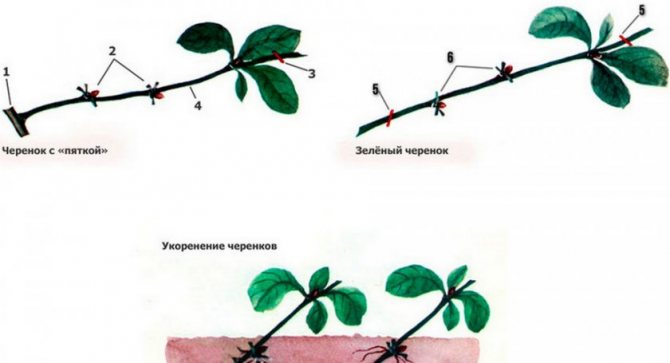
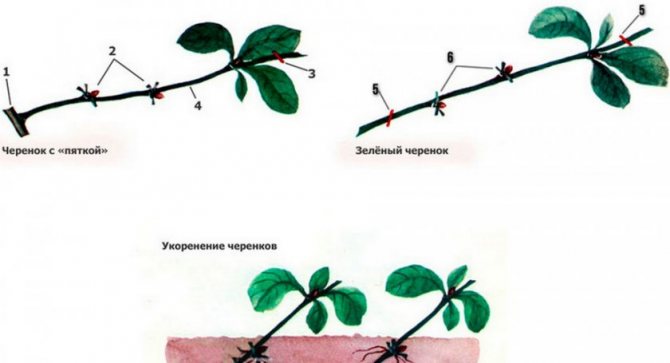
1 – two-year wood; 2- removal of the lower leaves; 3- place of the cut of the cutting; 4- green shoot of the current year; 5- places of the cut of the cutting; 6- removal of lower leaves
There are two options:
- Plant cuttings for rooting indoors.
- Leave the blanks in water until roots appear.
For pruning, you need to wait for dry hot weather. You should choose strong branches without signs of disease or any defects, not completely woody. It has been noticed that cuttings from the lateral lower shoots root much better than from the main “skeletal” branches.
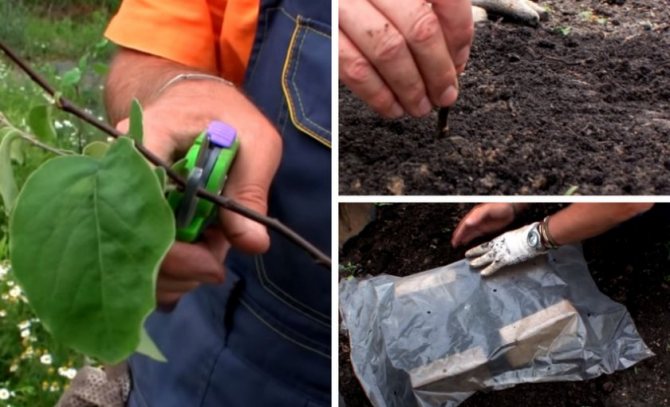
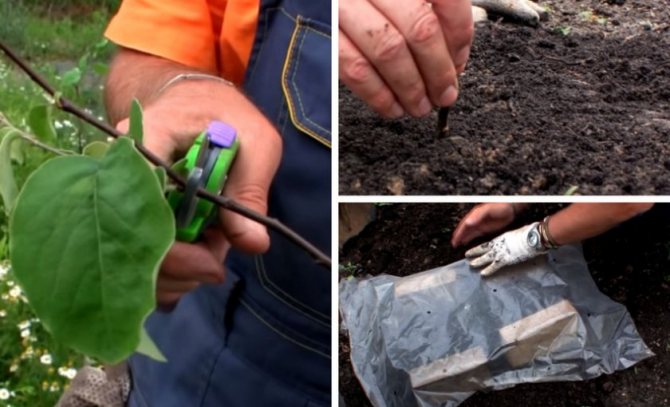
The used garden tool must be sharp, otherwise the integrity of the vessels of the plant will be violated, which will lead to their blockage.
Shoots are cut 5-15 cm long, but the size may vary, since the presence of at least two internodes is required. The lower cut is made immediately below the first of them, and the upper cut is about 1 cm higher than the second. The cut is made at an angle to increase the surface for possible root formation.
Depending on the drug used as a root growth stimulant (Bio Roots, Speedfol Amino, Mega Vega), the cuttings are immersed in a special solution for 24 hours, for a couple of hours, or simply sprinkle the cut abundantly with powder.
Video: Reproduction of Japanese quince by cuttings
In water
One of the simplest rooting options is “water”. The main problem in this case is the high risk of rotting of the cuttings.
So that the water does not sour, and the cuttings do not rot, certain conditions must be maintained:
- do not change the water, but simply top up it upon evaporation;
- place each stalk in a separate container to avoid contact with other specimens;
- control the water level – if there is too much of it, there may not be enough oxygen at the bottom, which causes rotting of the lower part of the cutting;
- provide diffused lighting, but sufficient for the continuation of photosynthesis;
- store at the optimum air temperature + 23 ° С. + 25 ° С;
- Root cuttings in water not lower than + 20 ° С.
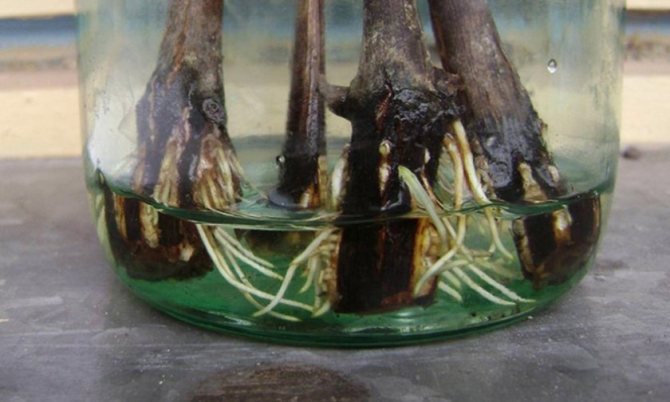
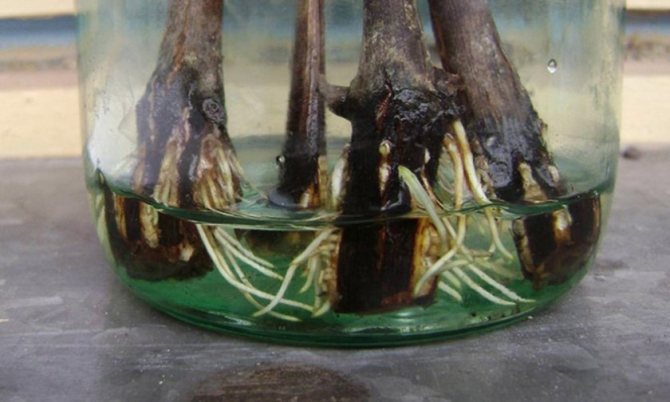
After the formation of roots about 5 cm in size, the seedlings can be transplanted into a container or garden, but not yet in a permanent place of growth.
In the ground
Having chosen the soil for rooting, the cuttings are planted in containers at an angle. The soil mixture should be sandy-peat in a 3: 1 ratio. The container must be covered with foil or glass to create greenhouse conditions.
Cultivation from seeds
- The generative way of reproduction of quince is considered the most reliable. Its advantages are:
- ease of implementation;
- high percentage of seed germination (about 80%);
- lack of strict requirements for soil;
- the ability to land “with a delay”.
The planting material is large fruit seeds that are fully ripe by the end of autumn. The first priority is to carefully remove them by sending the pulp for processing. At the second stage, sowing of seeds should be organized.
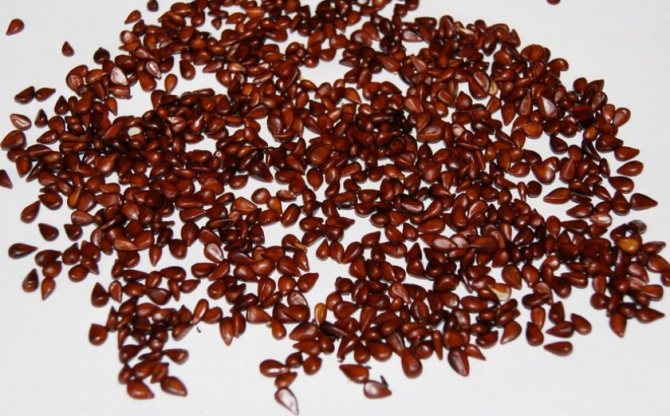
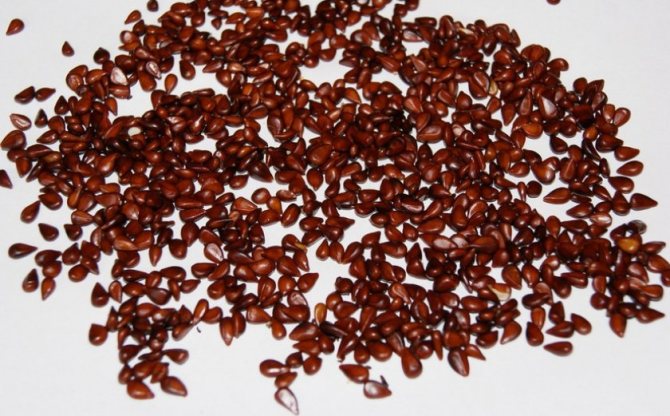
Having made the furrows a maximum of 20 mm deep, you need to place seeds in them and cover them with soil mixture. The planting site is mulched with compost, peat or humus. After winter, shoots appear, and by autumn you can determine young plants for a permanent place of growth.
When it is not possible to plant in the current season, the seeds require stratification – aging in cold conditions. In this case, additional troubles arise.
The process requires some actions:
- Prepare a box with coarse sand or perlite.
- Place the seeds in this substrate for 2-3 months.
- Keep sand slightly damp but not wet. Its optimum temperature is at 0 ° C.
- Provide the required air temperature in the room (+ 3 ° C. + 5 ° C) and humidity (about 50%).

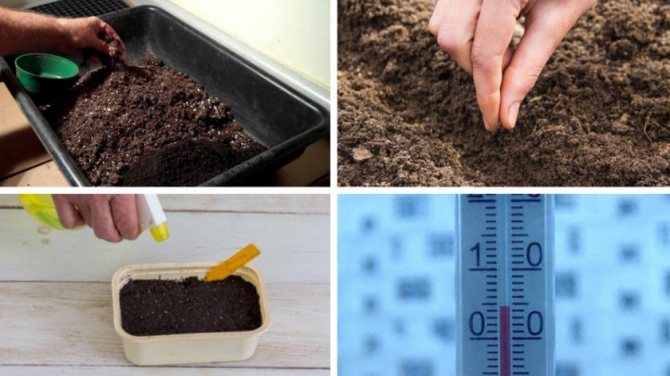
During hibernation, the seeds naturally open and germinate a little. In the spring, they can be planted in an open area without fear, since the plant is hardy and unpretentious.
The second option is to use a container with a mixture of peat, sand and compost (or humus). It is also important for sprouted seedlings to maintain adequate moisture levels. It will take about 30 days to germinate. Then it is necessary to reduce the number of seedlings by removing too “sluggish” specimens or sprouts with signs of disease.
Young plant care
Quince is not too demanding in care, however, young seedlings need to be given more attention and time.
The following rules can be noted for creating ideal conditions for the plant:
- Regular watering is a must, especially during dry seasons.
- The ground around the bush must be periodically loosened – carefully and not deeply (maximum 100 mm).
- Remove weeds in a timely manner.
- To retain moisture, the near-stem space should be mulched with peat, crushed bark or sawdust. The layer thickness is 30–50 mm, and the size of the flooring is approximately equal to the crown width.
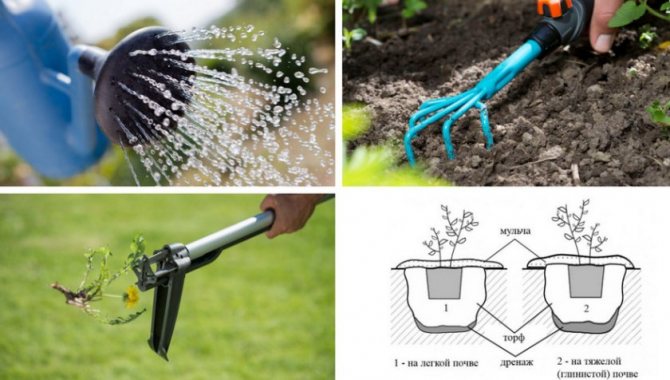
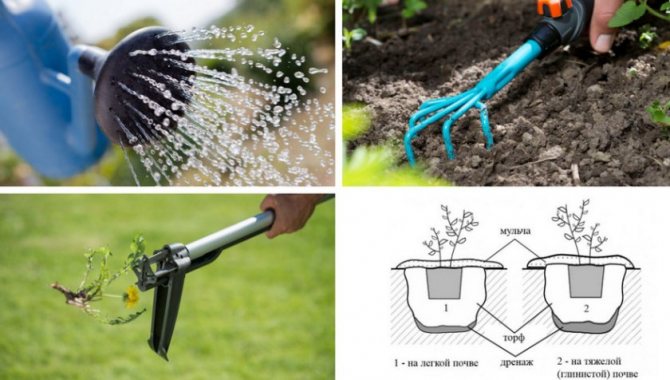
Initially, the shrubs have enough fertilizers applied to the planting holes. Starting from the second growing year, quince is fed with fertilizers:
- compost;
- superphosphate;
- potassium preparations;
- liquid ammonium nitrate.
Quince is rarely sick. This happens due to extremely unfavorable weather conditions (for example, prolonged cold and rainy weather) or when there is no maintenance at all.
Features of transplanting a bush
Sometimes it becomes necessary to relocate the plant from its “home” place. The Japanese quince develops a powerful rhizome over time. Moving an adult plant will be successful only if the root system is completely preserved, but this is quite difficult to do. For transplant work, the beginning or middle of September is suitable, so that the bush has time to take root before the onset of cold weather.
The sequence of actions is as follows:
- Prepare a hole corresponding to the diameter of the root system.
- Pour soil mixed with fertilizers into the hole.
- Lower the bush, carefully and carefully straightening the roots.
- Sprinkle soil mixture over the hole.
- Compact soil around the trunk and water abundantly.
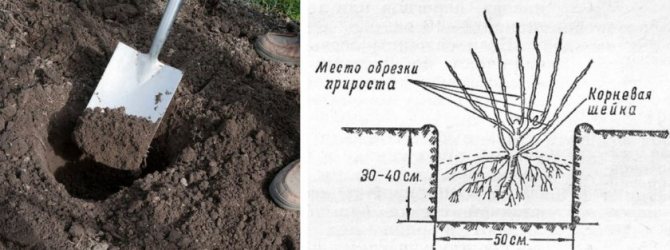

If a shrub reproduces independently and grows chaotically, then it forms a hedge with small, more decorative than edible, fruits. It is recommended to control young plantings, keeping a distance between plants of 1–1,5 m.
Japanese quince is a real long-liver, capable of decorating a site for at least half a century. It retains its decorative effect all year round, and its fruits are healthy and tasty, so you just have to decide on the method and propagate this universal plant yourself in your garden.
Advantages of the ornamental plant Japanese quince and its beneficial properties
Since ancient times, Japanese quince was considered an ornamental and fruit culture. Even the ancient Romans began to eat its fruits as the most delicious dessert. They sprinkled them with spices, coated them with honey and wine, and treated them to their dearest guests. But the ancient Greeks preferred to enjoy the flowering and fruits of the quince, and did not eat them. For them, quince was the embodiment of beauty and fertility. In the Middle Ages, chaenomeles fruits were used as an aphrodisiac and a medicine for problems with the organs of the digestive system. Today, the importance of this quince fruit is also difficult to overestimate. They can be used to make delicious jam or cook compote, which will have a tonic, diuretic, astringent, choleretic and antibacterial and anti-inflammatory effect on the human body. From the seeds of quince, containing a poison – amygdalin, you can prepare a healing decoction that will help heal the joints and, if necessary, soothe the nervous system.
Read also An effective remedy against cockroaches
Reproduction by seeds
Inside each quince fruit contains many (more than a dozen) small brown seeds, like an apple, which, unlike the latter, germinate well.

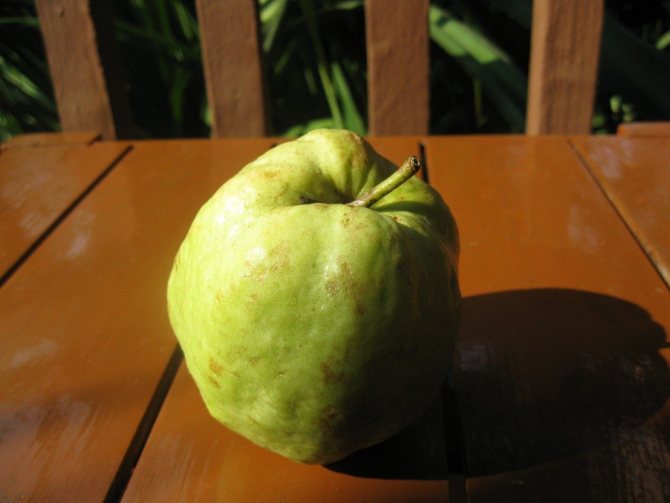
True, for this, before planting, they must be subjected to a long (up to 2 months) stratification – keeping in the cold. Planting seeds for seedlings can be done in spring or autumn. Autumn planting is preferable for several reasons:
- allows sowing seeds without stratification – during the winter this process will take place in natural conditions;
- by the time of germination, in spring, the plants will already have sufficiently developed roots;
- the emerged seedlings will be strong and healthy (only high-quality seed can withstand natural winter conditions), and therefore the trees will grow strong and well-bearing.
Planting seeds in the fall is carried out immediately in open ground around the end of October. You should not immediately get the seeds out of the fruit, let the quince, after being removed from the tree, lie down for 1 month, ripen, and the seeds will become dense and brown. After that, they are removed from the fruit, washed from mucus and pulp, and slightly dried for autumn planting. If planting is planned in the spring, then the seeds must be well dried and stored in a linen bag until sowing.
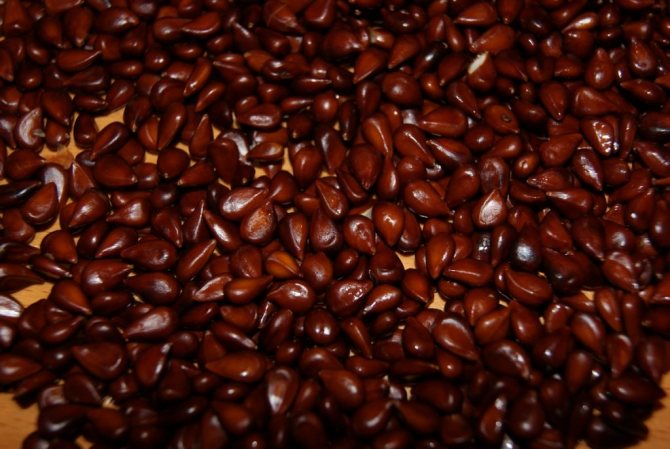

When planting in spring, the material is necessarily subjected to 2-3 months of stratification, which for sowing in pots begins in December, and for sowing in open ground – in February. February seeds will be ready for planting in late April – early May. If you want to have germinated seedlings in the spring, then it is advisable to start sowing in the middle of winter in peat pots.
Reproduction by cuttings
Cuttings are used when it is necessary to preserve all the varietal characteristics of the mother plant. For example, decorative Japanese quince with beautiful double flowers is often propagated in this way, when reproduction of which one so wants to preserve these varietal characteristics. Growing quince cuttings is a fairly effective way to achieve high rooting. Planting material can be planted anywhere: in greenhouses, greenhouses, open field or pots. In any case, subject to the technology, the cuttings successfully take root within a month, after which they can be transplanted to the desired place.

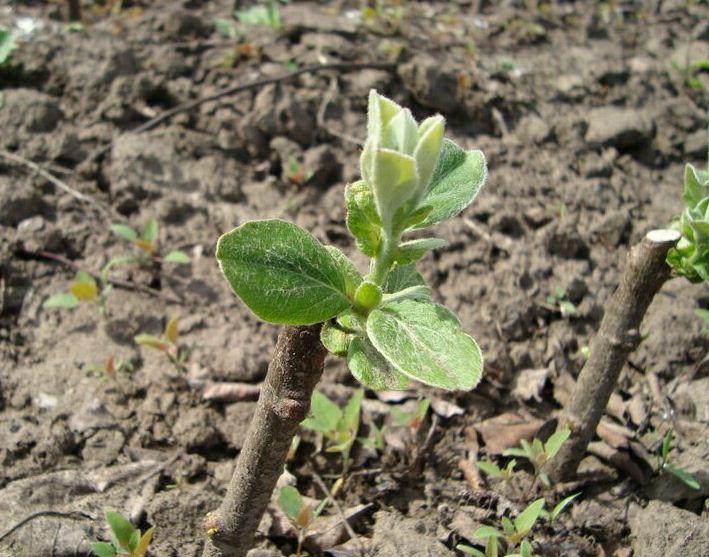
For harvesting cuttings, young green shoots are often used, less often woody ones. You can apply branches after pruning, or young root shoots. The survival rate of cuttings depends on many factors: the quality of the planting material, soil moisture and temperature, and other external and natural factors. As for the quality of the cuttings, they should be cut correctly. Each piece 15-20 cm long (4-5 buds) is cut with a sharp secateurs. The lower cut is made at an acute angle below the kidney, and the upper cut is made above the kidney.
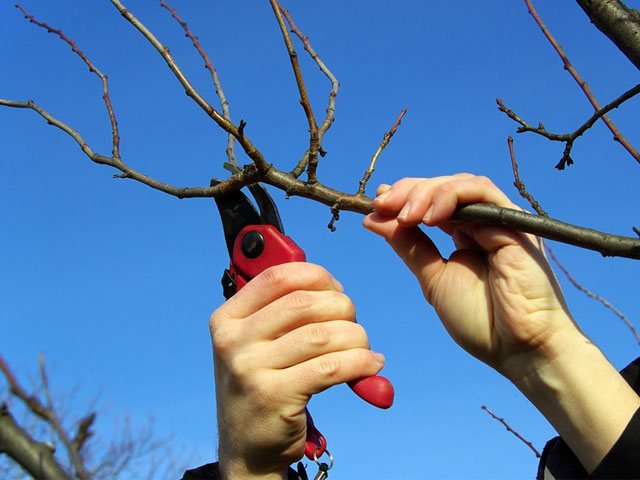
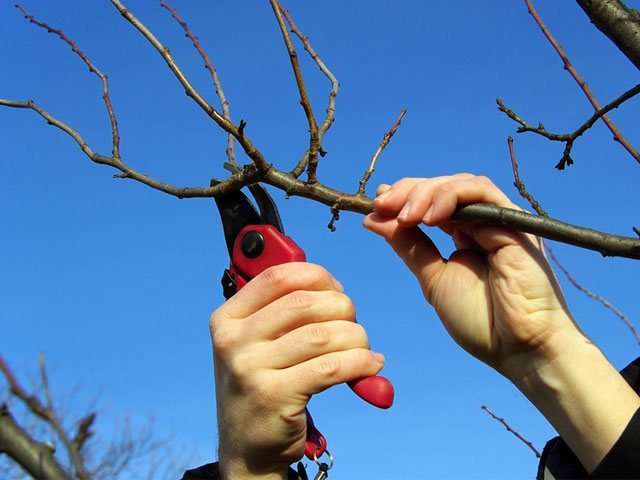
Before the blanks are planted in a moist substrate, they must be placed in a solution that stimulates root formation for a day. Then, at a slight slope, bury it in a pre-moistened soil consisting of sand and peat in a 3: 1 ratio. If the seedlings are not grown in a greenhouse, then for the first time it is better to cover them with transparent material, for example, a cut-off plastic bottle – this will maintain the desired humidity and temperature. After the buds form and germinate on the cuttings, the rooting process can be considered successful. Transplanting seedlings to a permanent place is carried out the next year, and fruiting is possible for 3-4 years of the tree’s life.
Botanical description of decorative quince with photo
Decorative quince, Japanese quince (henomeles) – these are the names of the same plant. Its homeland is warm Japan, but it can grow in any country with a cold climate. However, it should be noted that quince is quite winter-hardy and can withstand very severe frosts, if prepared in advance for them. After all, chaenomeles is a low-growing shrub, which can reach only 1-3 m in height and 5 m in width.Therefore, in winter, its lowest branches touch the snow, as a result of which they freeze, and in spring they bloom poorly, and also bear fruit.
Branches and shoots of Japanese quince grow in an arc, they are completely covered with green leaves, which are very similar in shape to the leaves of an apple tree, and resemble an artificial plant in color. This effect is achieved due to the glossy shine of the quince leaves.
The trunk width of the chaenomeles is only 50 cm, but, despite this, it is considered a strong plant, because it has a powerful and long rhizome, which perfectly loosens the soil and makes the quince drought-resistant. However, if you want to transplant a mature tree to a new place, then you are unlikely to succeed without harming the plant, the root of which you can severely damage.
Quince bloom begins in May and ends in early July. Large bright flowers, the diameter of which reaches 3-5 cm, grow very densely on a branch, forming clusters with 2-6 bisexual flowers, pollinated by bees. Therefore, quince is considered an excellent honey plant.
In July, the active fruiting of the shrub begins, at the end of September – in October, the fruits ripen and acquire a bright yellow color. They resemble a hybrid of an apple and a pear in shape, have a size of -5 cm in diameter, and a weight of about 45 g. On top of each fruit, it is surrounded by a waxy bloom, which keeps it from premature spoilage. Inside the fruit are its seeds, which resemble apple seeds. They can be sown up to two years after harvest.
Japanese quince lives 60-80 years. Begins to bear fruit 3-4 years after planting for 40 consecutive years.
With the help of root suckers
Root offspring are nothing more than the growth that the tree regularly produces. Growing to a certain size (height 12-15 cm and thickness 0,5-1 cm), it becomes full-fledged seedlings that can be separated from the mother bush and transplanted to a permanent place of growth. Reproduction of quince by offspring is considered the easiest and not laborious way, since the gardener only needs to separate the seedlings and transplant them. A significant advantage is the fact that such plants quickly and almost 100% take root, because they already have developed roots.

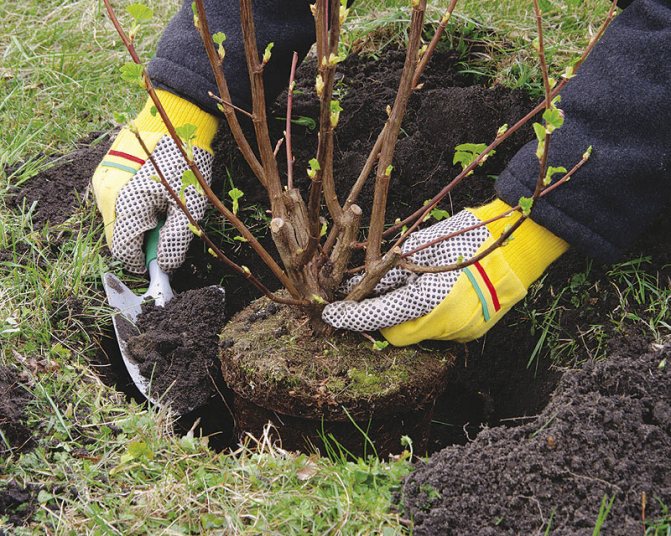
It is possible to plant offspring from the mother bush both in spring and autumn, however, spring planting is desirable for a cold climate.
Technically, it is very simple to do this: you need to separate the offspring, trying not to damage the root system, then plant them in pre-prepared planting holes at a distance of 1-1,5 m (depending on the variety).
After planting, the seedlings should be well watered and mulched with organic material. Until they take root in a new place and do not grow, it is necessary to maintain constant soil moisture.
Description of the plant Japanese quince
The exotic tree has a truly amazing appearance. It is believed that the Japanese quince is a green shrub or small tree, growing from 1 to 3 meters in height. The branches of the plant are densely covered with emerald leaves and two-centimeter sharp thorns at the places of the shoots. Due to its flexibility and attractiveness, the tree is used to create hedges and decorate the garden.
Resilient, flexible branches in spring are covered with numerous flowers with five petals, which differ in color, depending on the cultivar. Most often, the plant adorns the garden with white, red-pink and red-orange small flowers, reaching 3-5 cm in diameter.
After the flowering period, light orange or yellow-greenish rounded fruits appear on the shrub. Outside, the fruit is covered with a light layer of natural wax, which protects against sudden changes in temperature and frost. The diameter of a Japanese quince is 3-5 cm and weighs about 50 grams. Slightly less than half of the fruit is large brown seeds located in the center.
Types and popular varieties of Japanese quince
Japanese quince belongs to the genomes genome, which has more than 500 varieties. In Russia, this list is much smaller, only about 15 representatives are resistant to severe winter frosts. But even these few varieties will decoratively enrich a garden or plot.
- Katayanskaya grows only in warm climates. A three-meter tree with thorny branches is strewn with small green leaves. Light pink or white flowers give way to elongated fruits. Most often, this type is used for landscaping parks and squares of European cities.
- Japanese quince low or garnet bracelet is also called Henomeles Maulea. This is the most common species in Russia: the shrub does not grow more than 1 meter in height and is distinguished by resistance to frost and a high fruiting rate. The plant does not require additional pruning, and the stunning scarlet and delicate cream flowers allow you to create a hedge out of it.
- Ornamental quince has many names: beautiful, tall, beautiful. The thorny shrub grows from 1,5 to 3 meters in height and adorns the area with neat red flowers. Crossbreeding of this species has created most of the available varieties of Japanese quince. The variety of colors is also striking: all warm shades from white to soft red. In Russia, an exotic shrub grows only in southern regions with a warm climate.
